The 1953 National Jamboree was held at Irvine Ranch, California, from July 17 to 23 with the theme “Forward on Liberty’s Team.” 45,401 Scouts and Explorers were in attendance for the Jamboree.
Because the Jamboree was held close to Hollywood, many movie stars including Roy Rogers, James Stewart and Bob Hope were able to make appearances. President Dwight D. Eisenhower (and Vice President Richard Nixon, who stayed overnight and helped to prepare breakfast for his home town troop) also visited the Jamboree.
J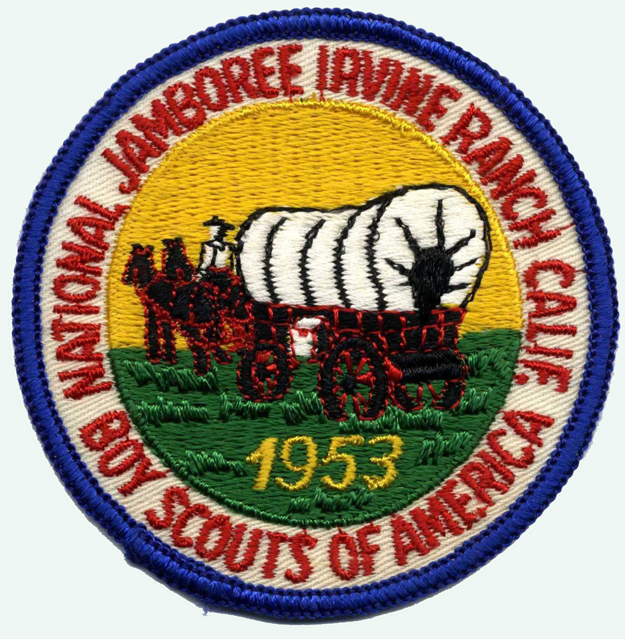 amboree participants were able to see and swim in the Pacific ocean (92,000 accident-free ocean swims), participate in Troop and Section campfires, a mammoth Scoutcraft demonstration, field sports and see a spectacular fireworks show. Special Achievement awards were introduced to teach and test Scouts in Scoutcraft skills.
amboree participants were able to see and swim in the Pacific ocean (92,000 accident-free ocean swims), participate in Troop and Section campfires, a mammoth Scoutcraft demonstration, field sports and see a spectacular fireworks show. Special Achievement awards were introduced to teach and test Scouts in Scoutcraft skills.
The “watchwords”: “What’ve you got?” and “What’ll you give?” were common referring to the sport of “Swapping” of items, ranging from horned toads, to Florida sea shells, to Sequoia tree cones and even some patches.
Based on the success of the first OA service troop at the 1950 Jamboree, the OA again selected Arrowmen to serve at the Jamboree. A total of 18 Arrowmen were selected by Area Leaders and were approved by the Regional Offices. The service troop operating out of the Camp Headquarters provided guard service, served as orderlies and assisted in numerous projects related to the operation of the Jamboree. Members of the service troop also paid their own fees and expenses in the same manner as all other Scouts attending the Jamboree.
A special fellowship assembly was held just for Arrowmen where members met and heard from top national OA leaders, joined in singing of camp songs, and renewed friendships with other brothers from across the nation.
3
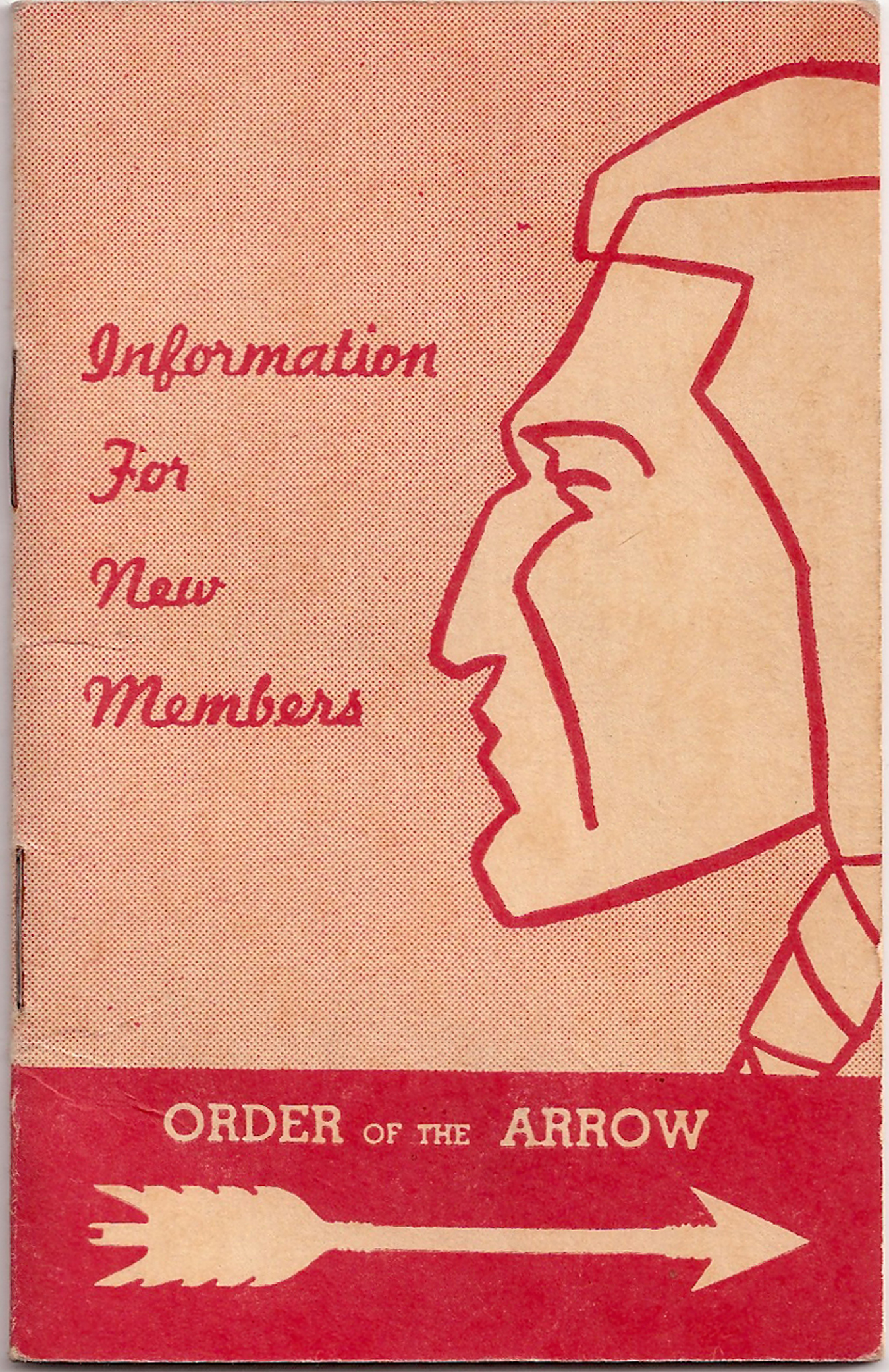 The eleven page booklet gave new members information about the history of the Order, words to the song of the Order, the legend of the Lenni-Lenape, membership and Honors of the Order, OA Insignia, and place to keep your personal record in the Order.
The eleven page booklet gave new members information about the history of the Order, words to the song of the Order, the legend of the Lenni-Lenape, membership and Honors of the Order, OA Insignia, and place to keep your personal record in the Order.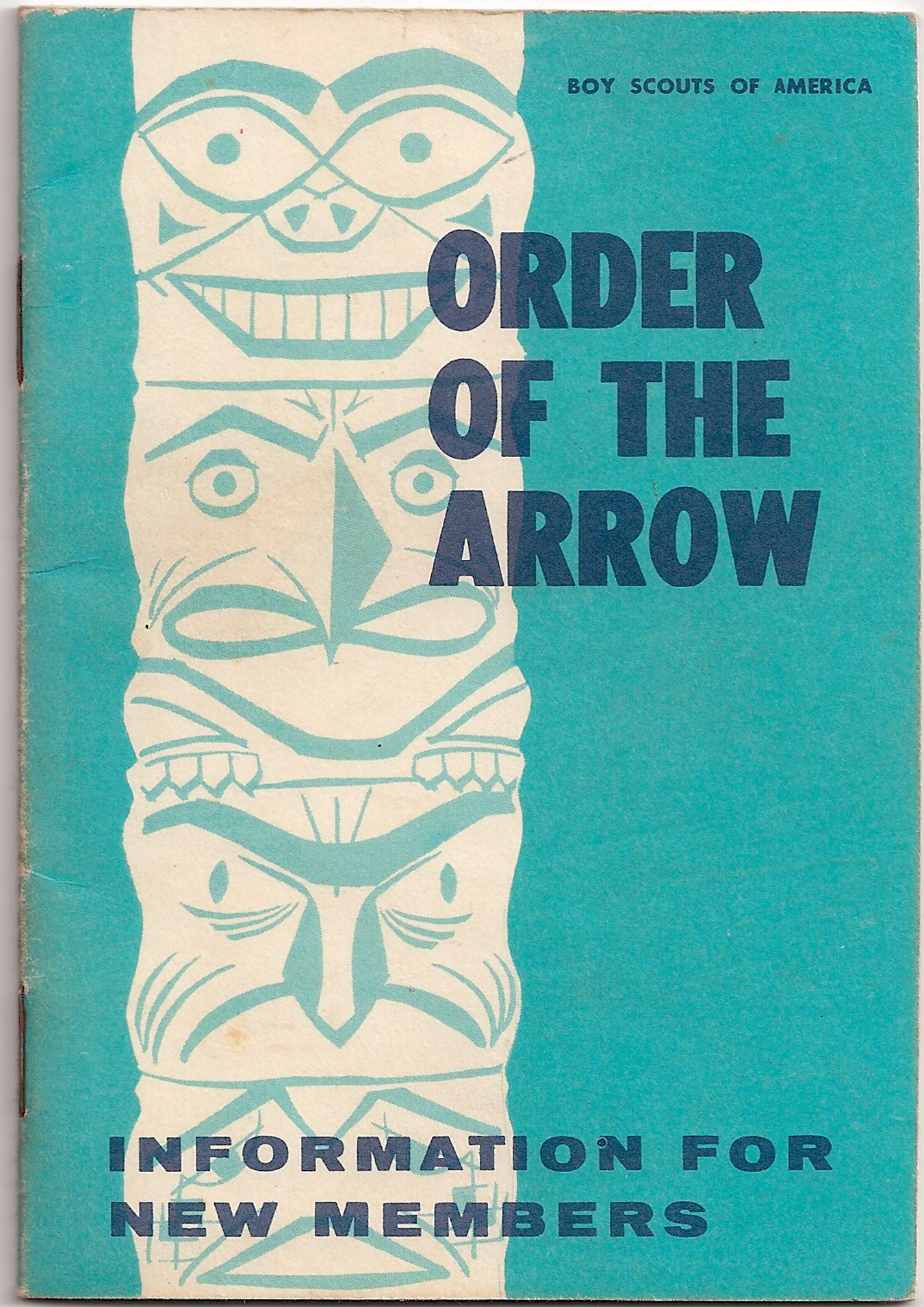
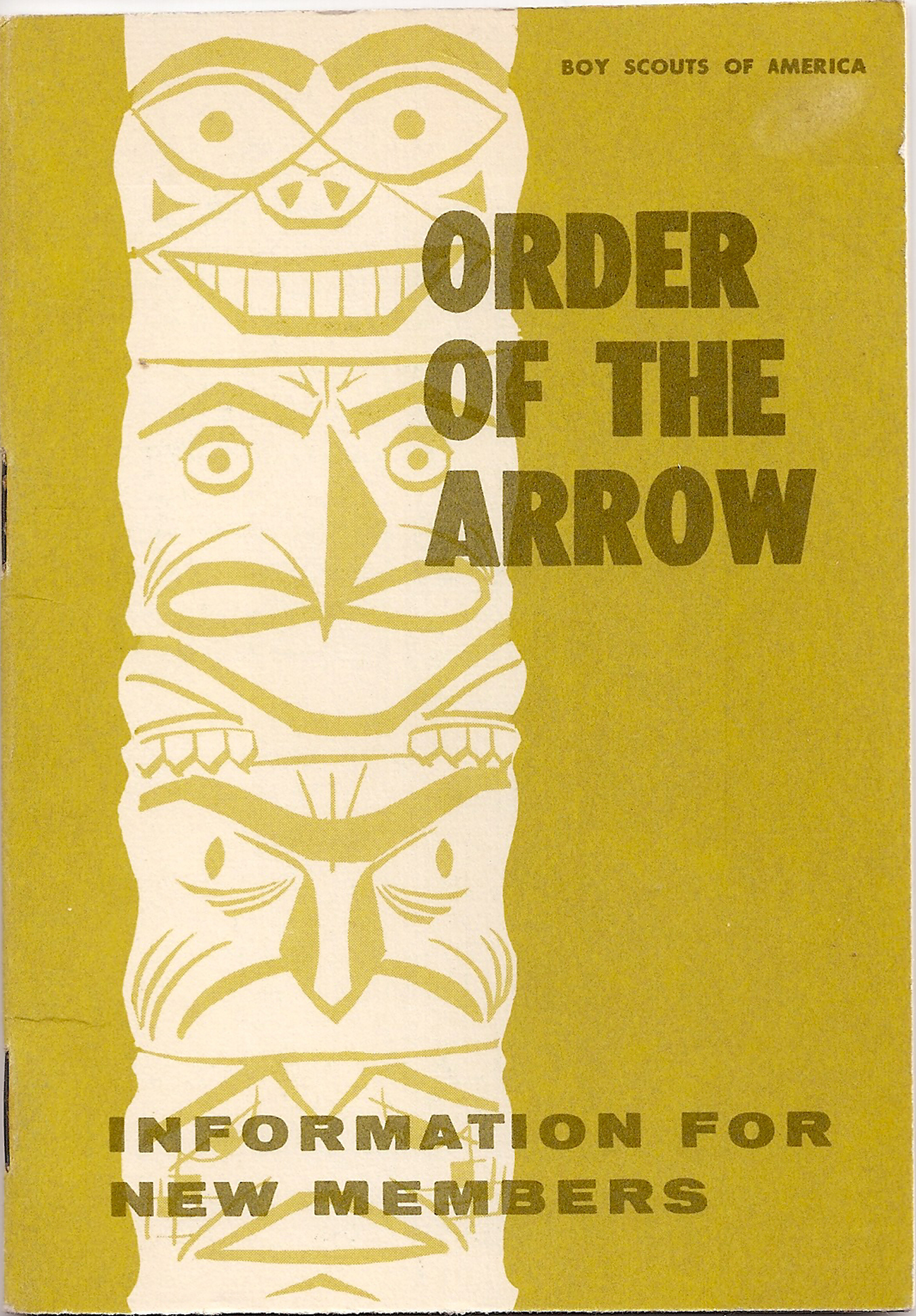
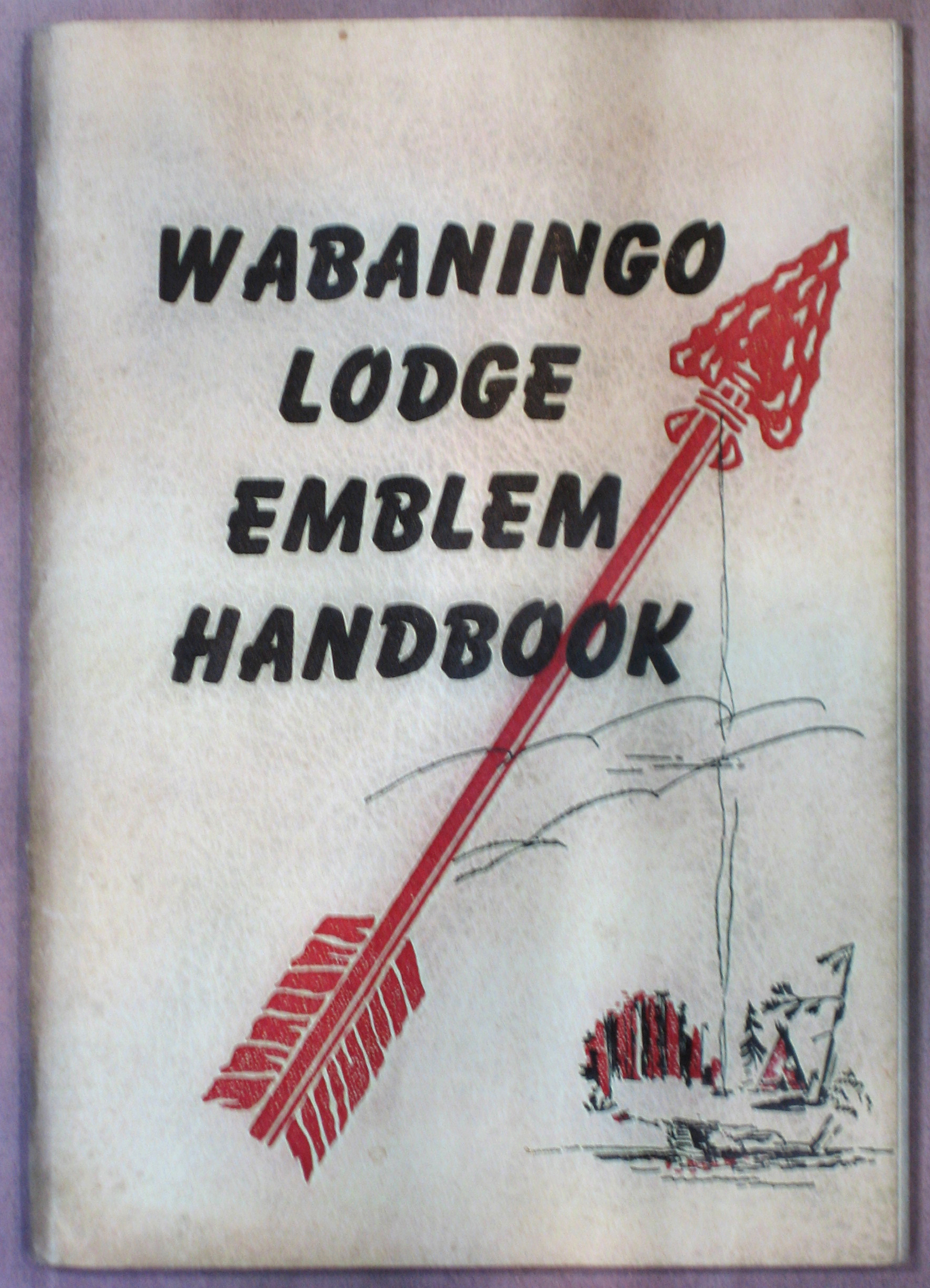 Vi
Vi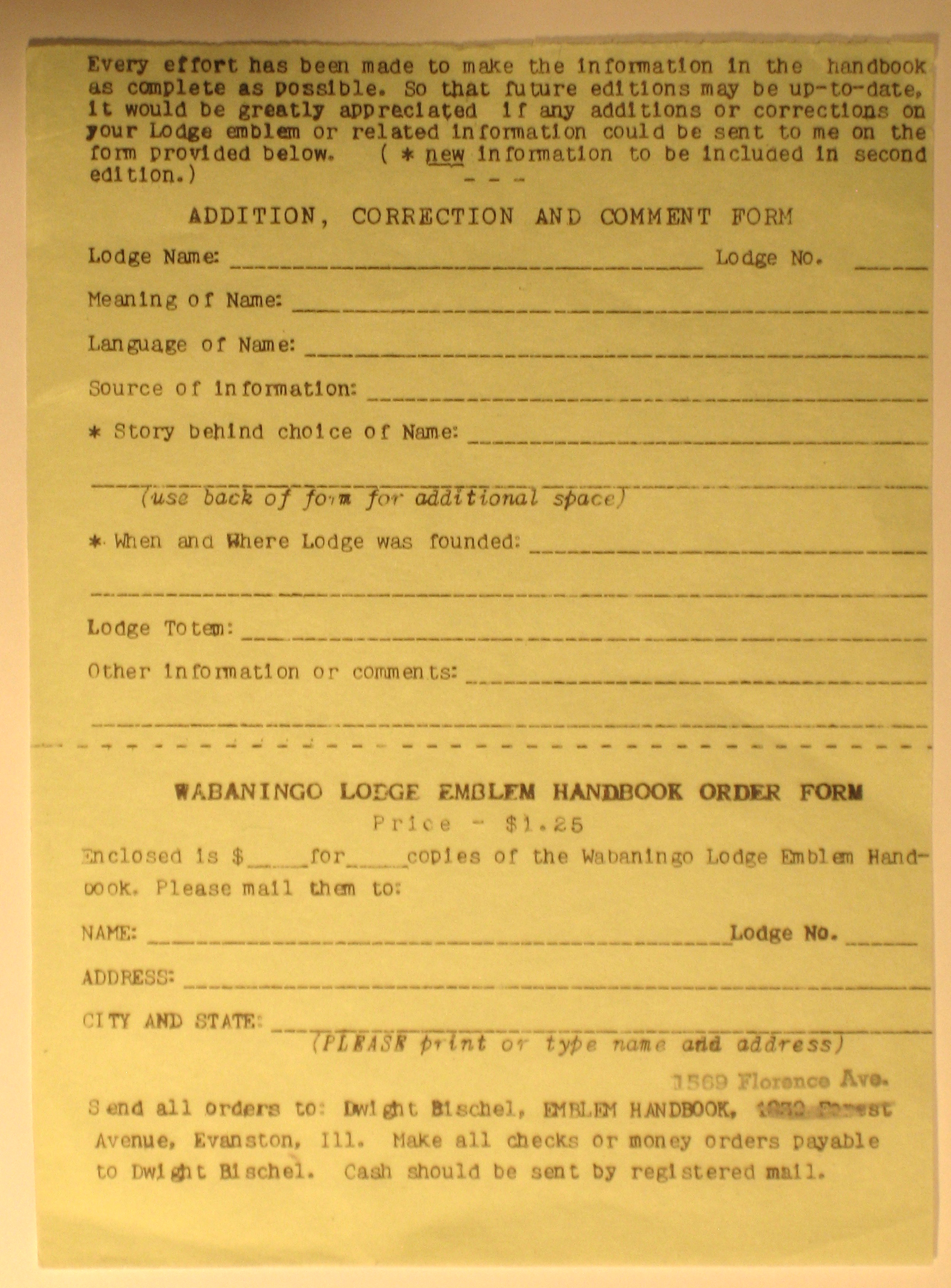 rtually all of the badg
rtually all of the badg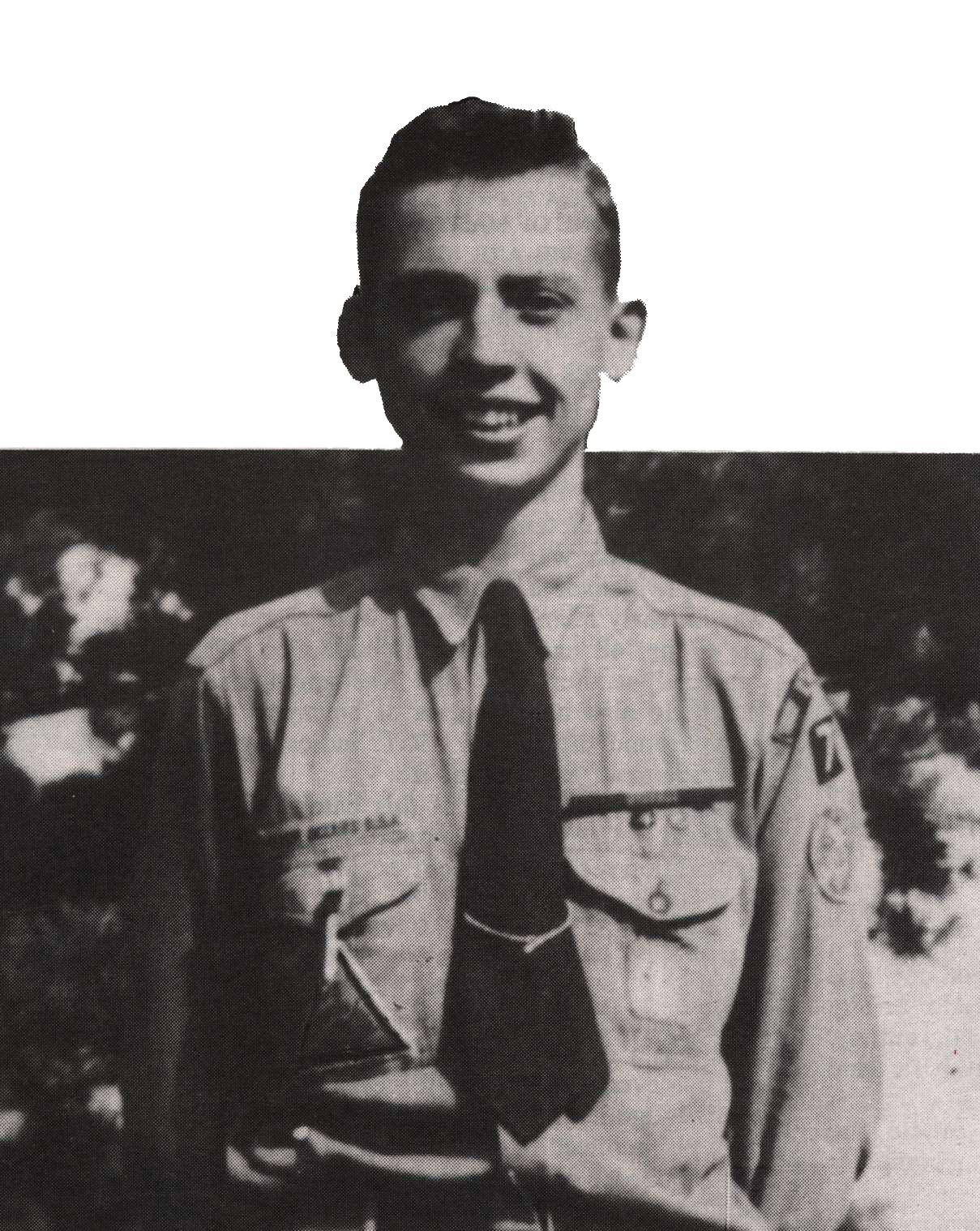 es issued since 1952 are catalogued and known. Our knowledge of the insignia prior to the issuance of the Wab book is much more incomplete, the further back in time the less our knowledge. Dwight Bischel was not the first patch collector;
es issued since 1952 are catalogued and known. Our knowledge of the insignia prior to the issuance of the Wab book is much more incomplete, the further back in time the less our knowledge. Dwight Bischel was not the first patch collector; 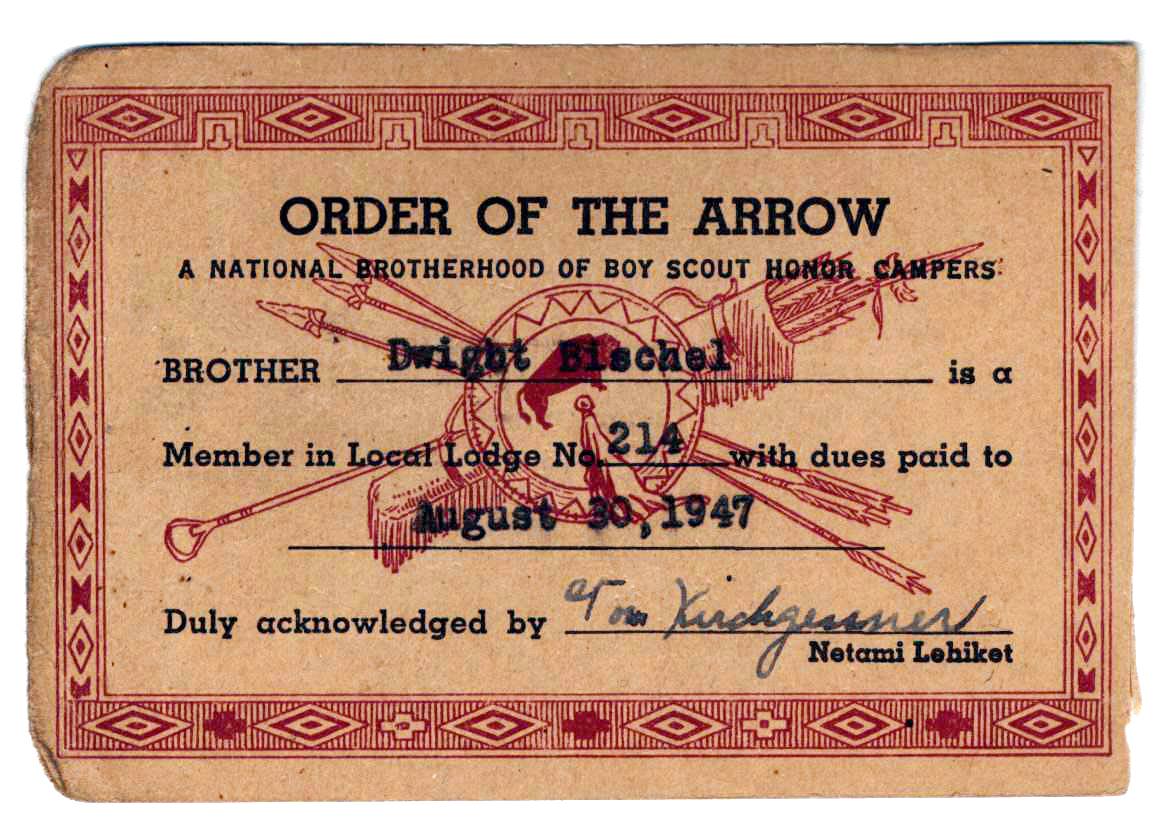 A patch hobby that has been present at all national and most regional, area, sectional and local OA events since publication.
A patch hobby that has been present at all national and most regional, area, sectional and local OA events since publication.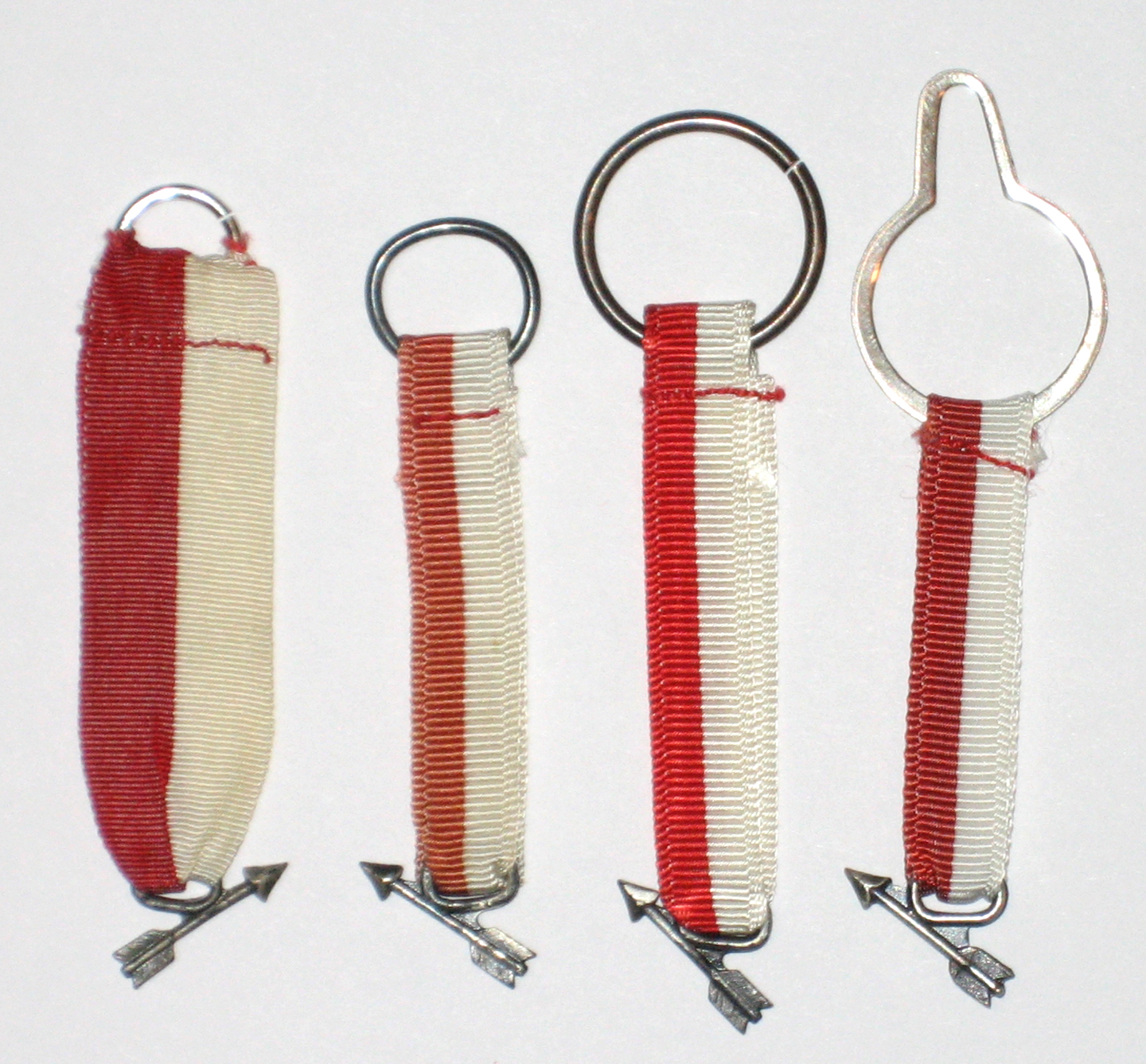 The Admonition was no longer left for Kitchkinet; it was only right for him to convey. Starting in 1952 the Universal Arrow Ribbon would point over the wearer’s right shoulder; where it still points today.
The Admonition was no longer left for Kitchkinet; it was only right for him to convey. Starting in 1952 the Universal Arrow Ribbon would point over the wearer’s right shoulder; where it still points today.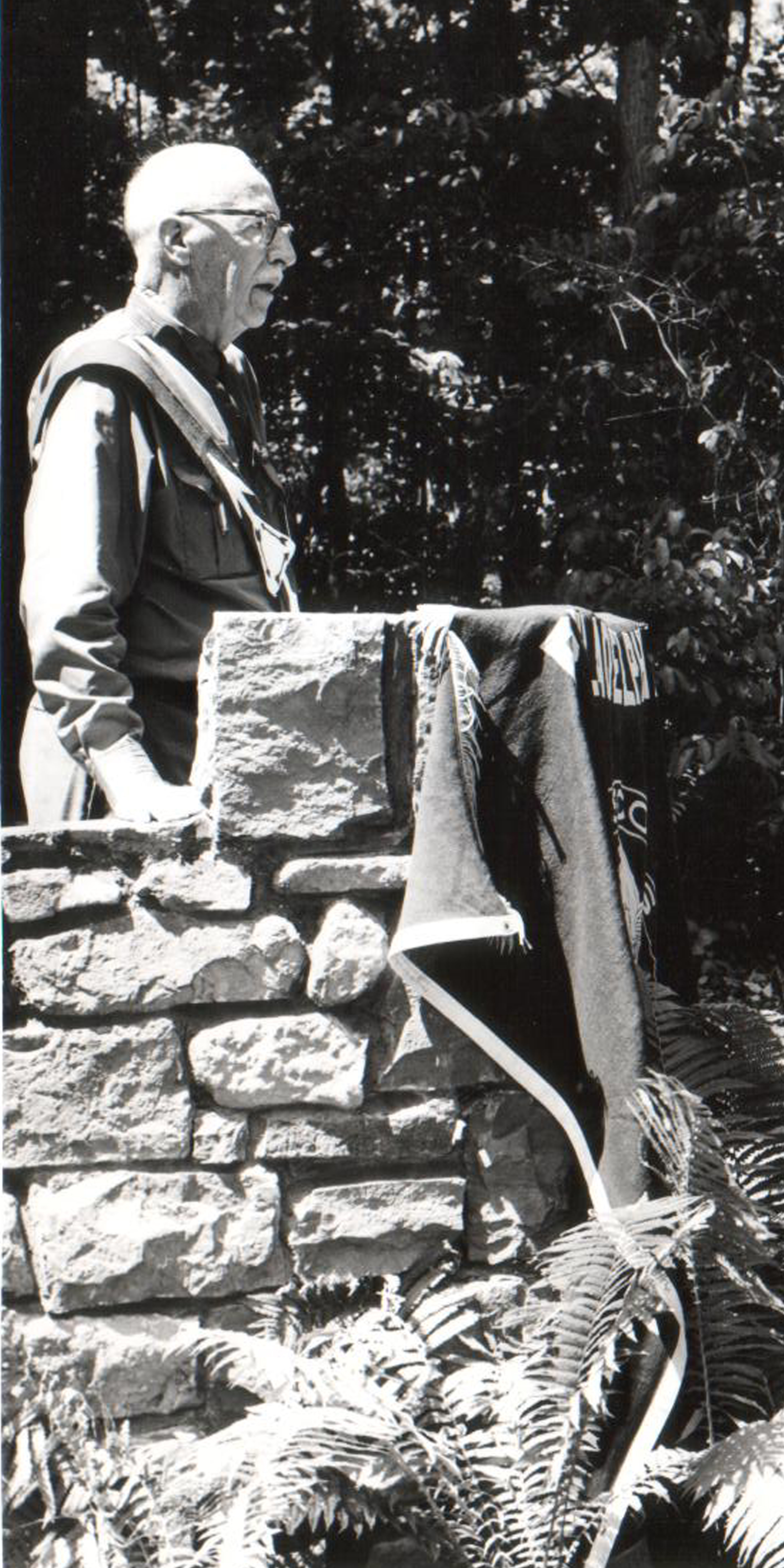 The job of Vigil Secretary h
The job of Vigil Secretary h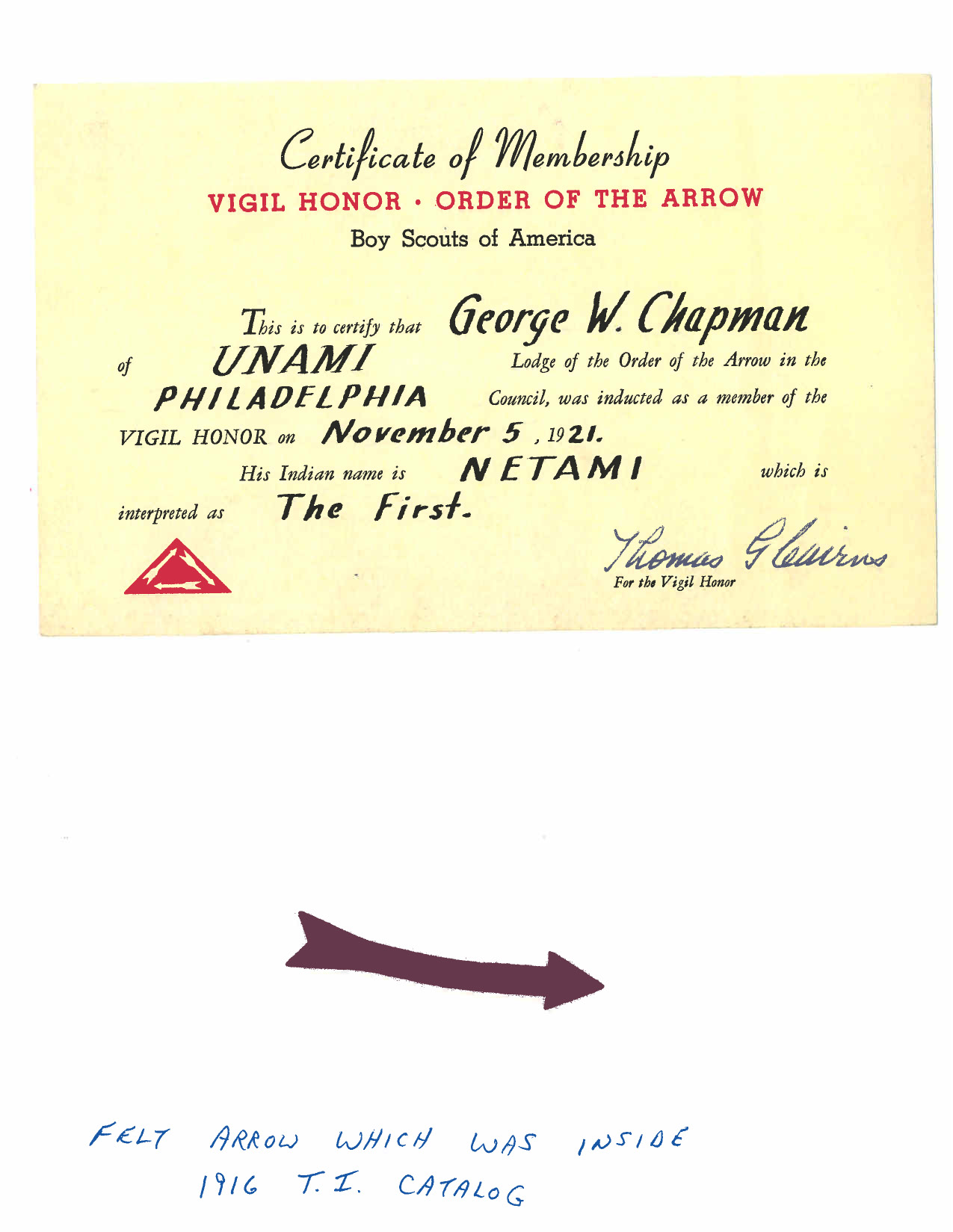 ad vastly grown in his ten-year tenure. In 1943, Chapman’s first year as Secretary there had been 23 Vigils inducted. In 1952 there were 217. The National Secretary assumed the job of Vigil Secretary.
ad vastly grown in his ten-year tenure. In 1943, Chapman’s first year as Secretary there had been 23 Vigils inducted. In 1952 there were 217. The National Secretary assumed the job of Vigil Secretary. amboree participants were able to see and swim in the Pacific ocean (92,000 accident-free ocean swims), participate in Troop and Section campfires, a mammoth Scoutcraft demonstration, field sports and see a spectacular fireworks show. Special Achievement awards were introduced to teach and test Scouts in Scoutcraft skills.
amboree participants were able to see and swim in the Pacific ocean (92,000 accident-free ocean swims), participate in Troop and Section campfires, a mammoth Scoutcraft demonstration, field sports and see a spectacular fireworks show. Special Achievement awards were introduced to teach and test Scouts in Scoutcraft skills. that had a local tradition of their own honor society and councils that had Scout Executives that did not want fraternities / honor societies in their councils.
that had a local tradition of their own honor society and councils that had Scout Executives that did not want fraternities / honor societies in their councils.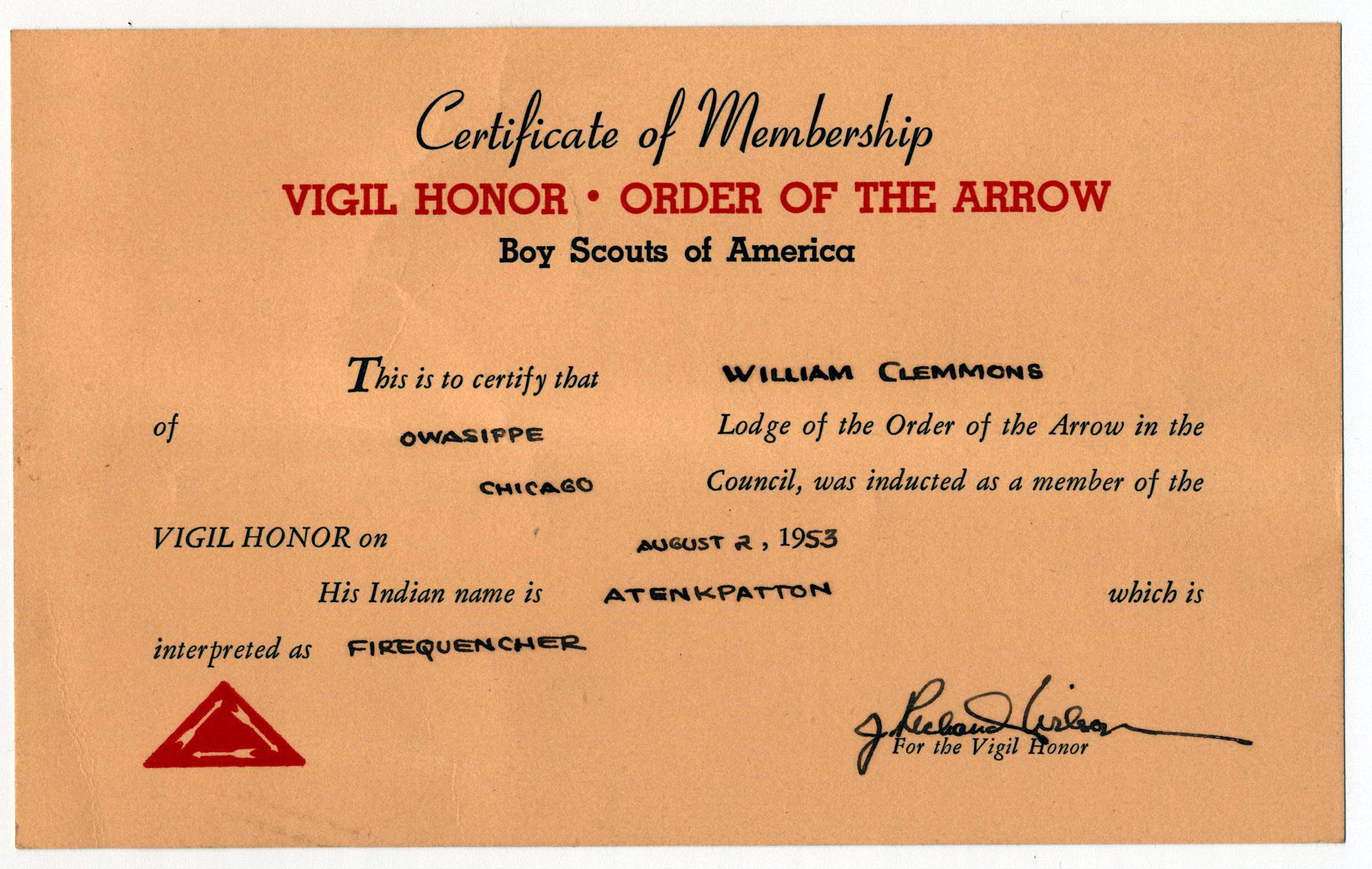 professional Scouting job in his hometown council in Springfield, Massachusetts after less than three years. Wood, only 26, decided that he preferred being a Field Executive and camp director.
professional Scouting job in his hometown council in Springfield, Massachusetts after less than three years. Wood, only 26, decided that he preferred being a Field Executive and camp director.